What happens to our bodies when we die?
'They're Dying to Get in Here' is a study of death through the daily practices of an ordinary American funeral home. People are prepared for burial or cremation in a ritual that takes place thousands of times a day around the world. Embalmers prepare bodies - arms and legs are massaged to relieve rigour mortis, the face is set, blood is replaced with embalming fluid, and the body is groomed. After a funeral, the body is buried or cremated.
This series shows a rare glimpse into a subject that none of us can escape. The question of what happens to our bodies when we die leads us on a journey through various realms of contemplation and endeavour, underscoring the complexity and profundity of human attitudes toward mortality and inviting viewers to ponder the mysteries that lie beyond our mortal coil.
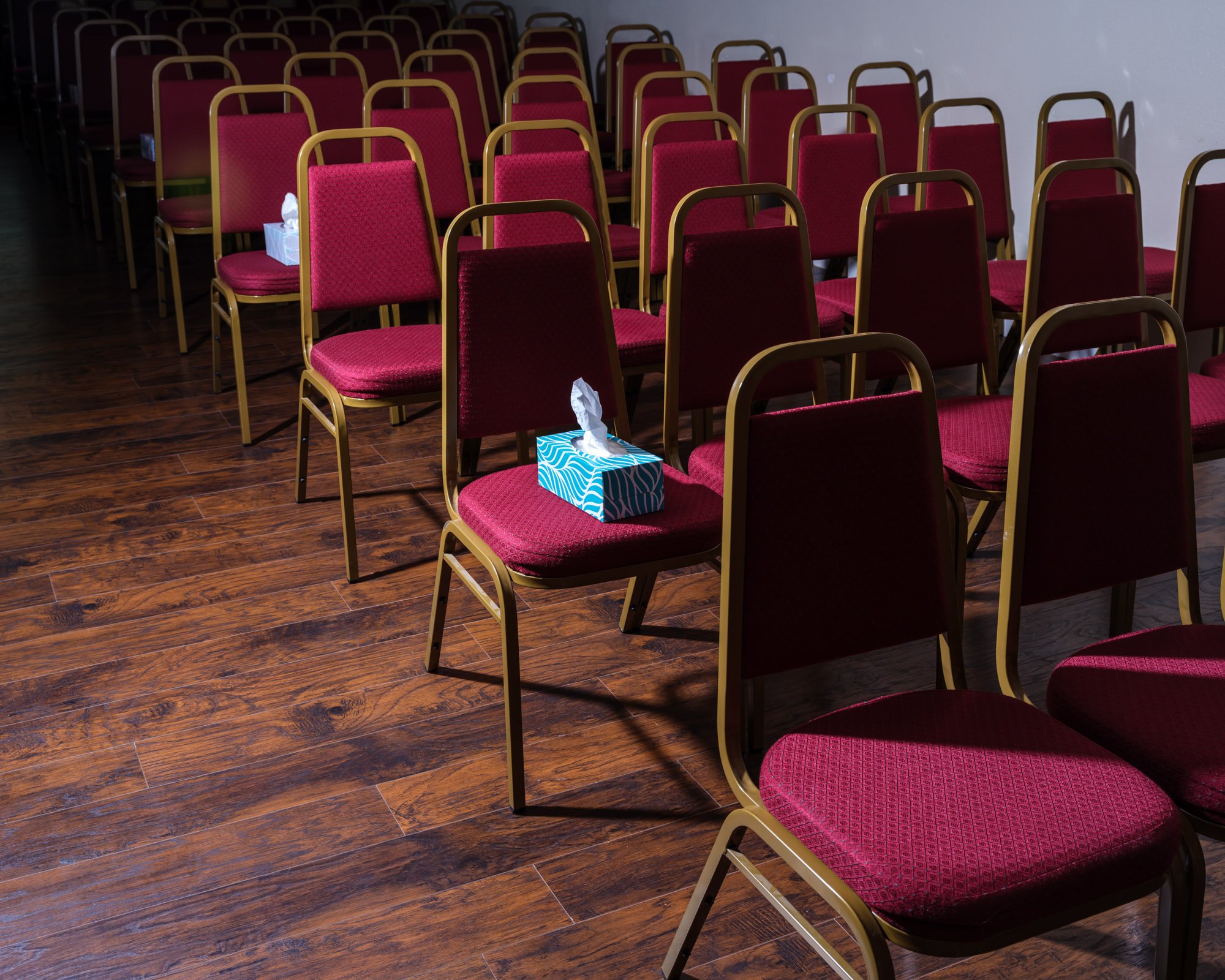
"It's just a passion to help people. They come to you and they're at their worst. They're burnt out, they've been up all night. They're just exhausted."
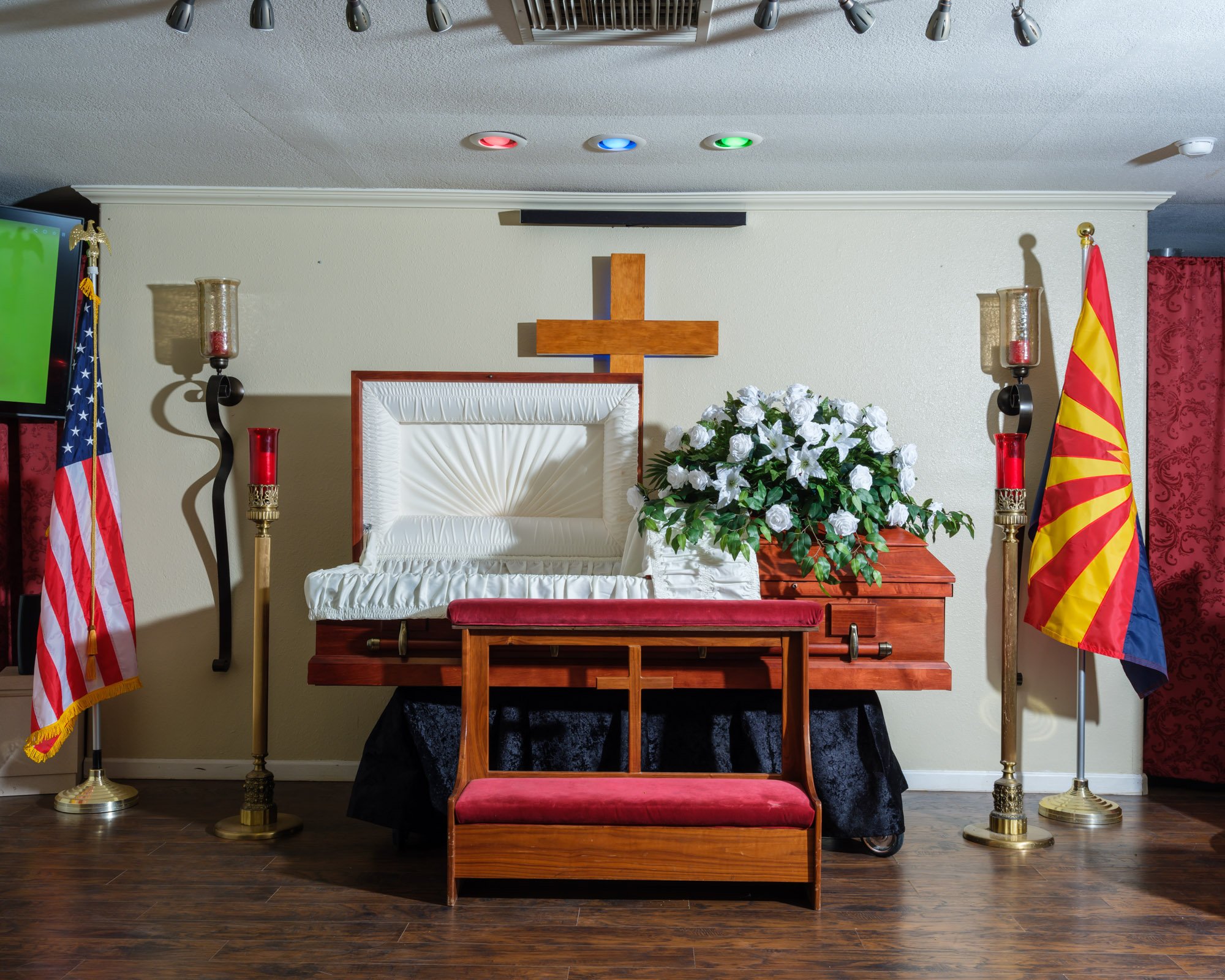
"We're not suit and tie guys. I don't like suits. I don't wear suits. It puts families at ease when they come in to see you because they don't have to look past the tie the Armani suit. They can just feel comfortable and relaxed."
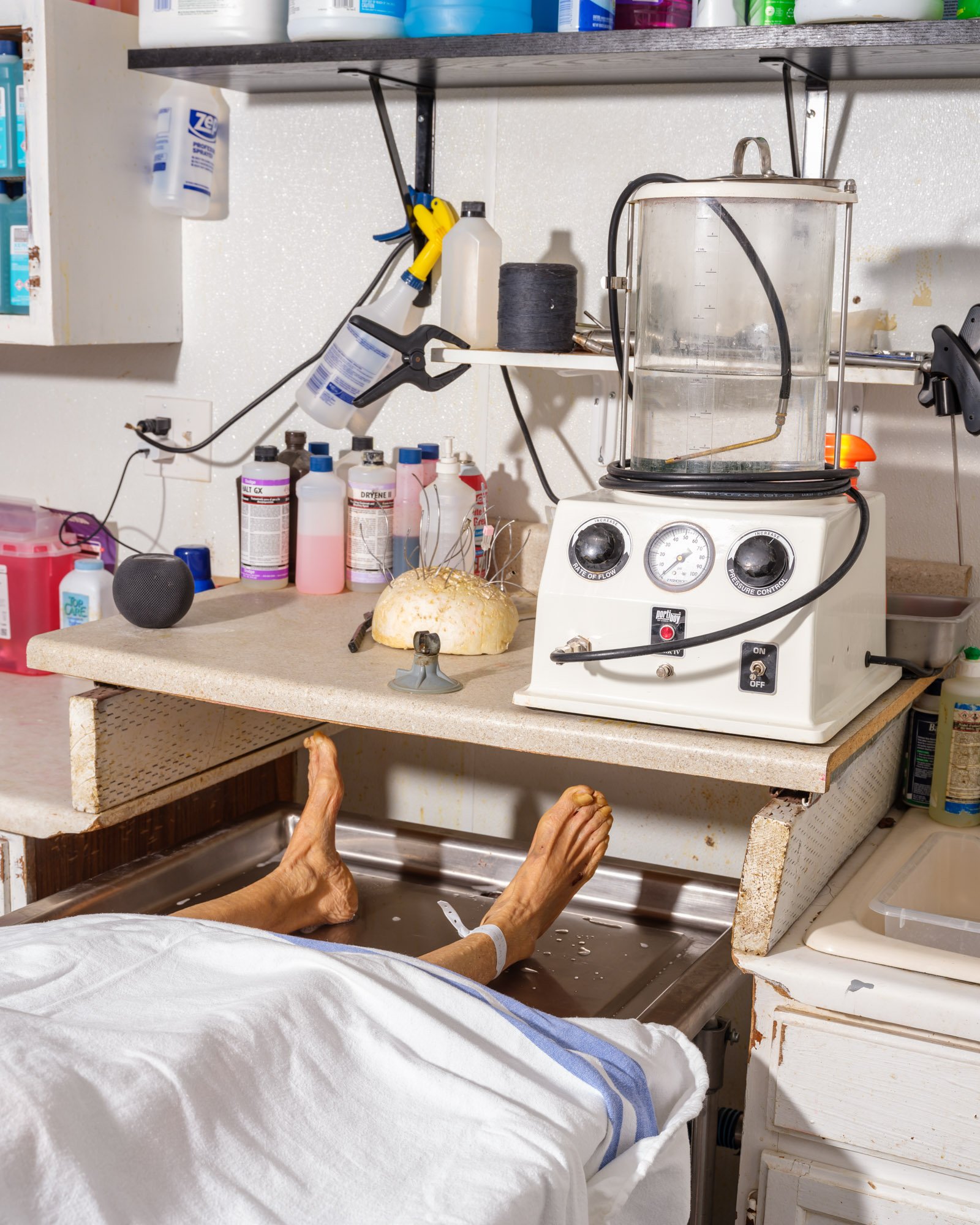
Equipment used in the embalming process. Embalming involves cleaning and disinfecting the body before using chemicals to preserve it temporarily. A small incision allows embalming fluid to replace blood in the circulatory system, slowing decay. If needed, fluids are also removed from the abdominal cavity and replaced. The body is then cosmetically prepared, dressed, and positioned for viewing in a casket or designated area, ensuring a peaceful appearance that honors the deceased and meets the family's preferences.
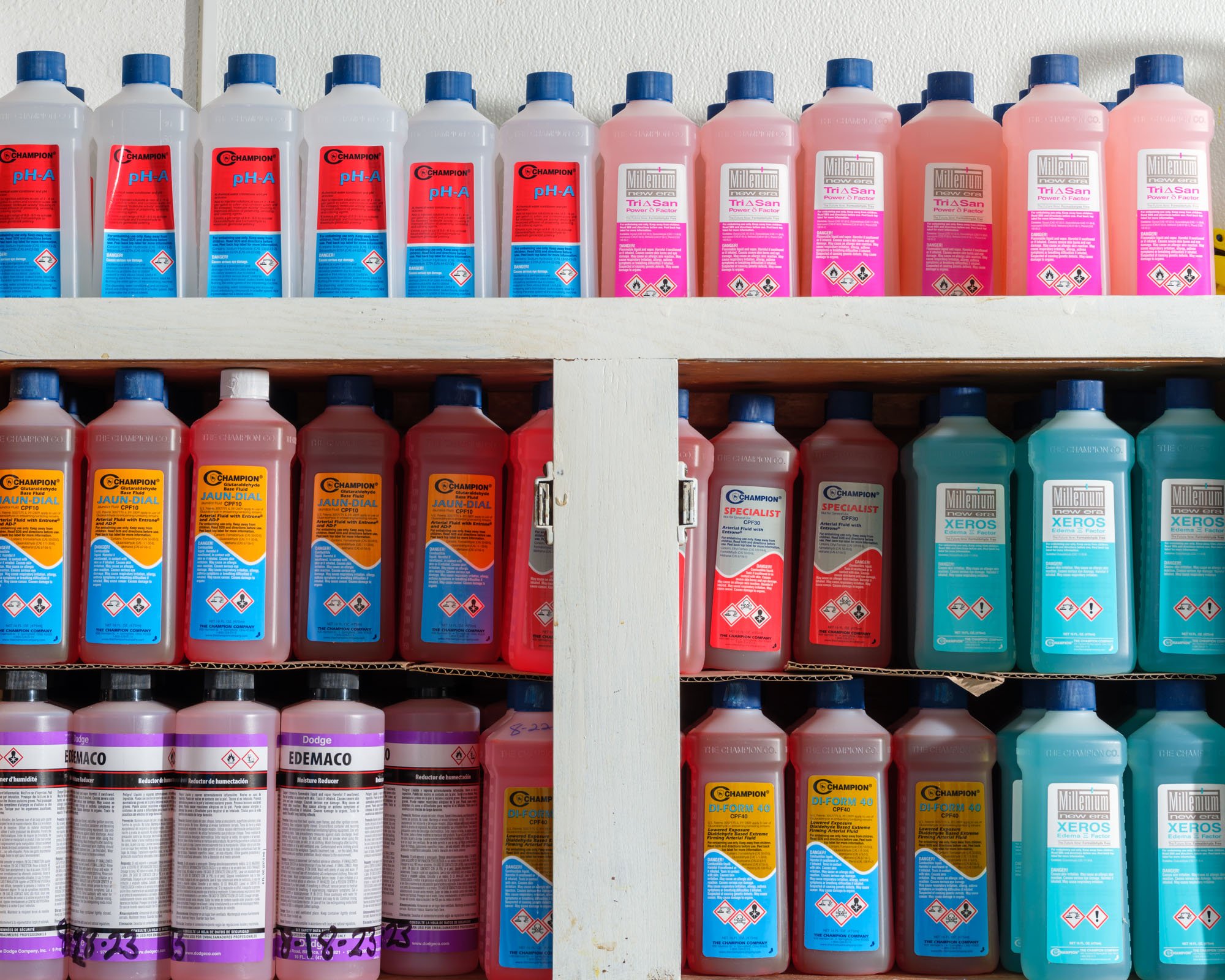
Chemicals and solutions used in the embalming process, in which blood is replaced by special fluids.

"It's a little difficult for some new employees, but my staff understands that the mission is the family and trying to set everything up for them" explains Leaspi. "So the focus has to be perfection and customer service, empathy, sympathy for the family. You're there to answer any question, answer everything they want need to know, guide them. My policy is that if they call you at two o'clock in the morning, which I encourage families to do, you take the call and you answer it."
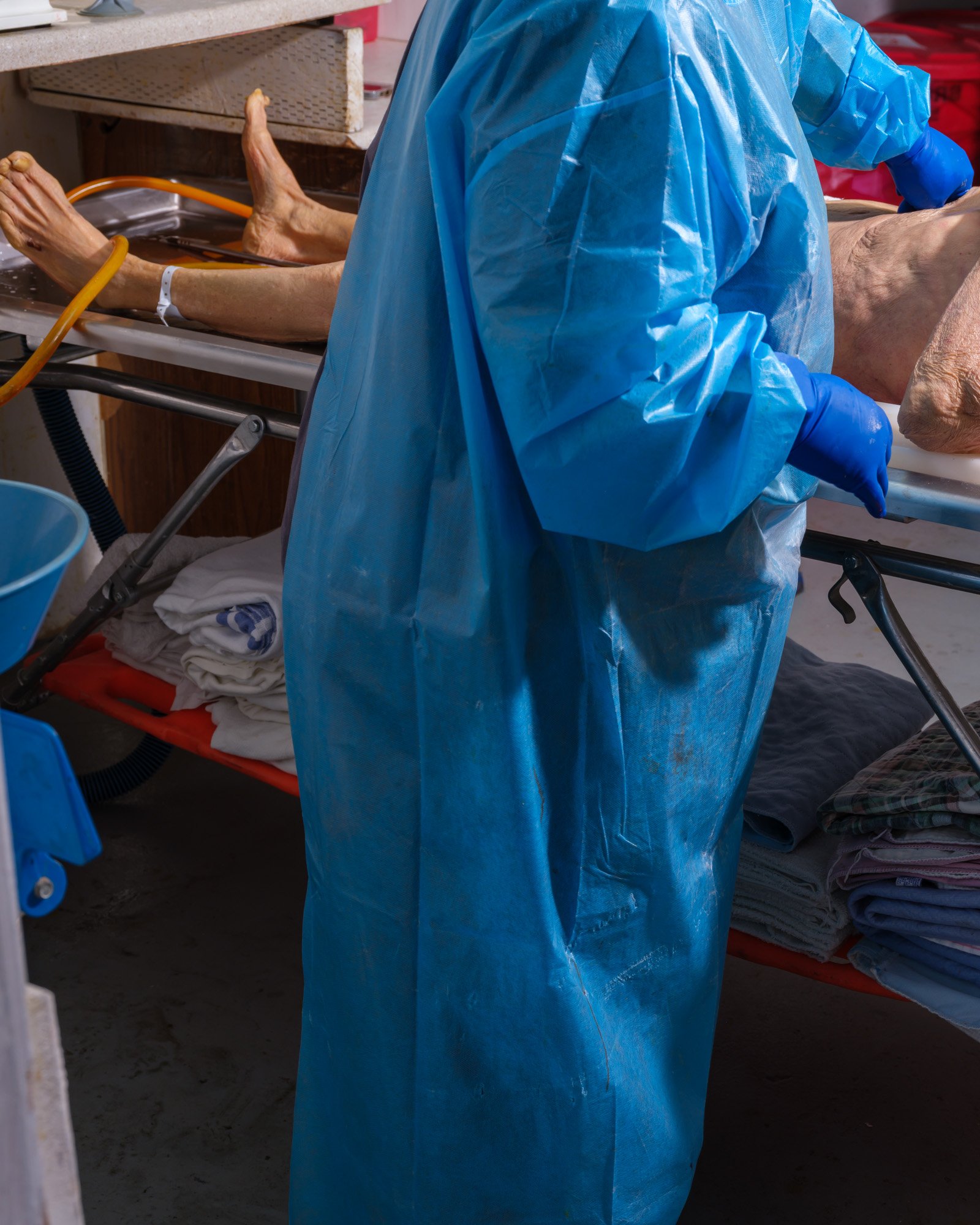
If there will be a viewing or visitation of the deceased, the body will usually be embalmed. If a person dies a natural deal, the embalming process takes around an hour. But if they have been involved in a car crash or a shooting for instance, they go to the county morgue and then have an autopsy. When they arrive at the funeral home, they can be in a bad state - there can be a lot of repair work to do.

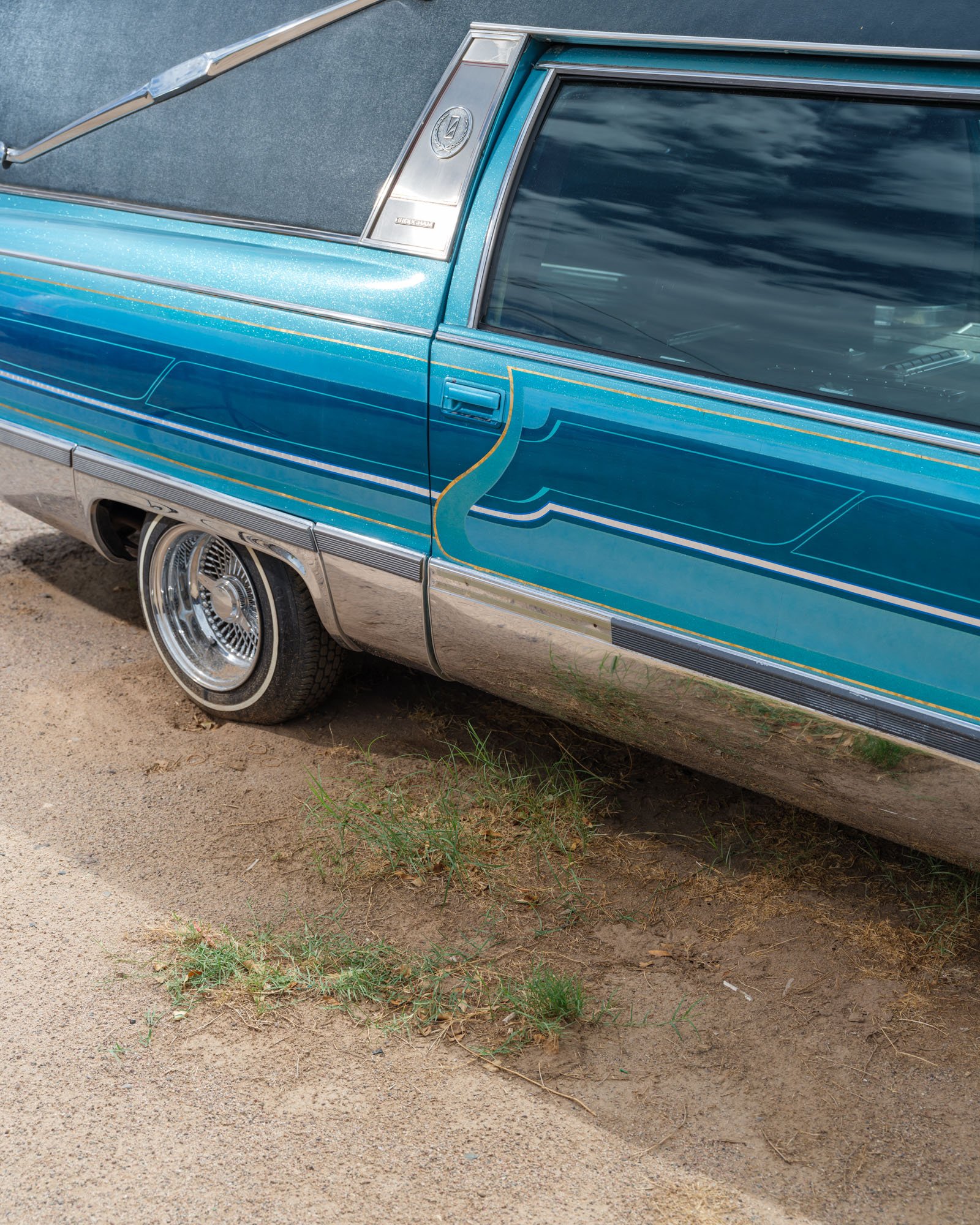
DSCF7790.jpg

Bodies in the refrigerator at the crematory, awaiting cremation. Many choose to rent a coffin for the funeral, and then be cremated in a cardboard box due to the expense of coffins.

“When you're processing someone, you can open the retort (oven) door and rearrange the individual inside the machine. The first time I did it, it was complete chaos and carnage on the inside of that retort, fire and flame and smoke; there's a human corpse laying there on the bed of the machine. At this point in time, you have to make a decision. Whether you're going to push forward and muscle through what you're observing, or back down and say this isn't for me. And what I saw didn't budge me too much. I was experiencing something new for the first time. And this is a part of life. I had individuals who trusted that I could take care of this challenge. And I made sure that the job was done as effectively as I could. And I guess you could say what I do is noble in giving someone's family member their last request. My sons know about what I do. They want to be cremated as well. I mean, I know they're young, only 10 and 13. They want to mix my ashes with theirs when they pass so we can be together forever. I melted when they told me that.”
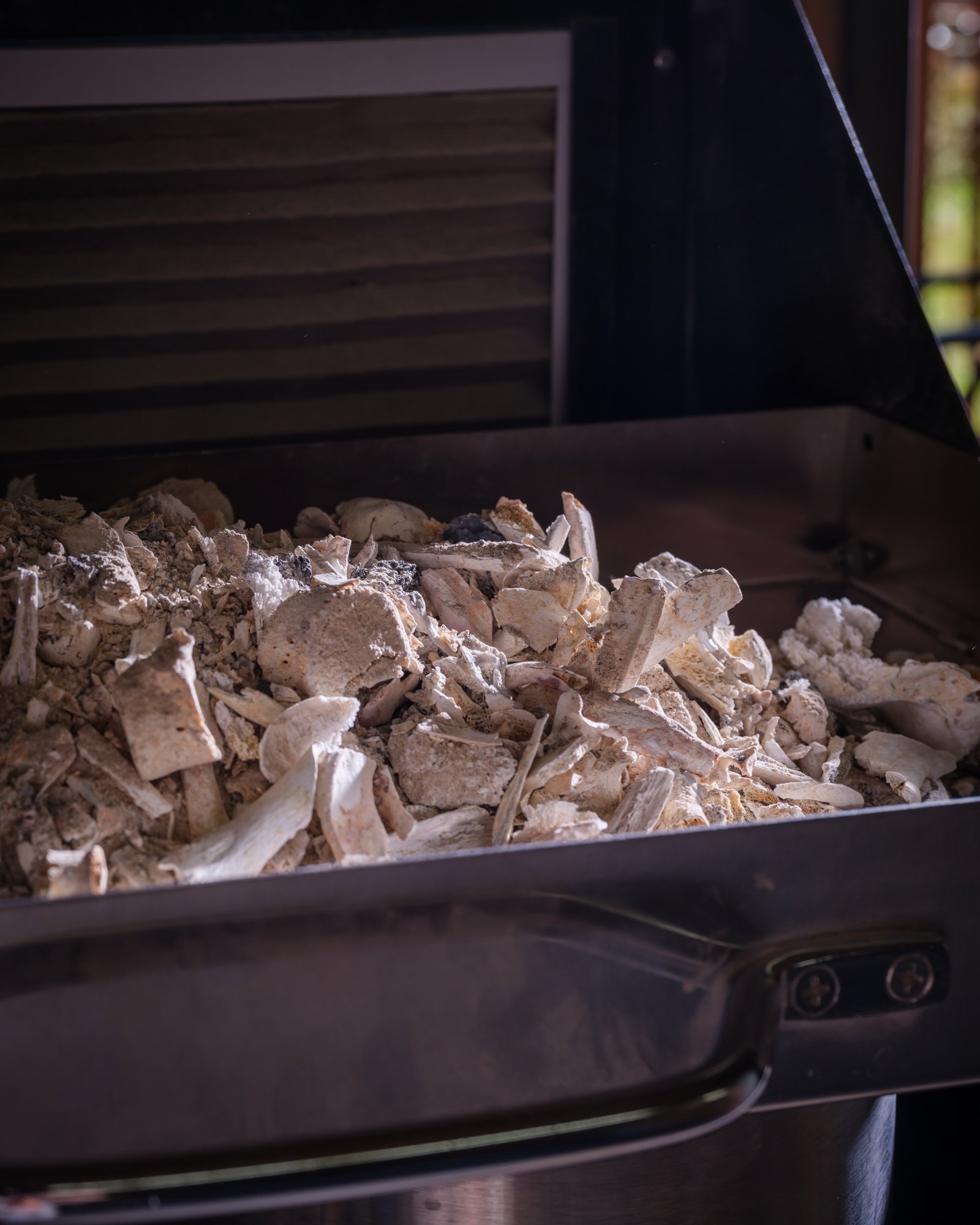
Ashes that have been removed from the retort before being placed in an urn.
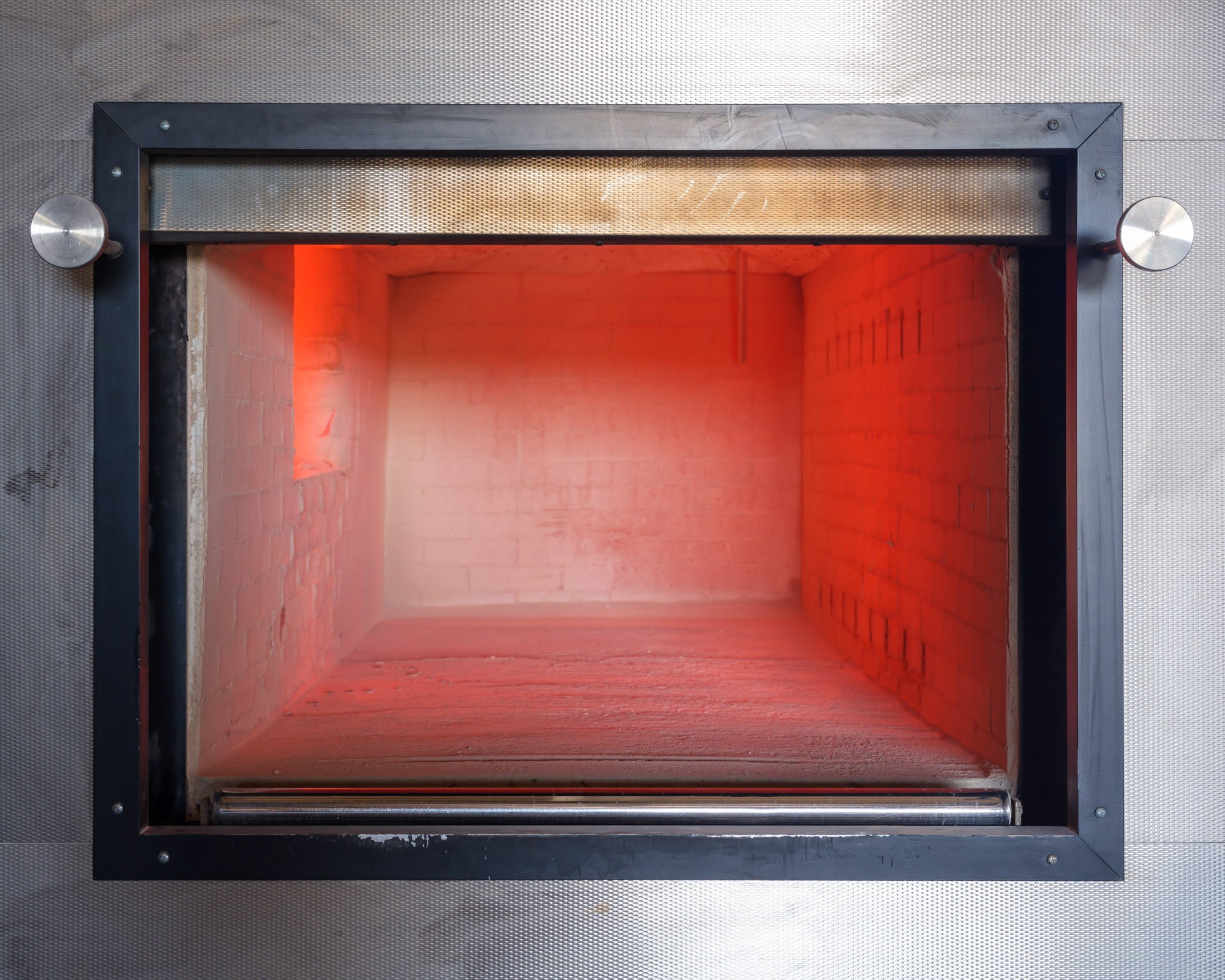
The oven at the crematory. Two ovens cremate approximately eight bodies per day. The amount of time it takes for a body to burn depends on weight and body composition, but usually takes between one and a half to three hours. “Once the bodies start to incinerate, you see a lot of things in there. You’re seeing the internal organs. You're seeing the brain as it chars, seeing the kidneys, the heart, the liver. Oddly the thing that I still can’t understand is that the brain is the last thing that will burn in the machine. You can have flesh, everything gone, heart, organs, all gone. But the brain can sometimes be the last thing left in the machine.”
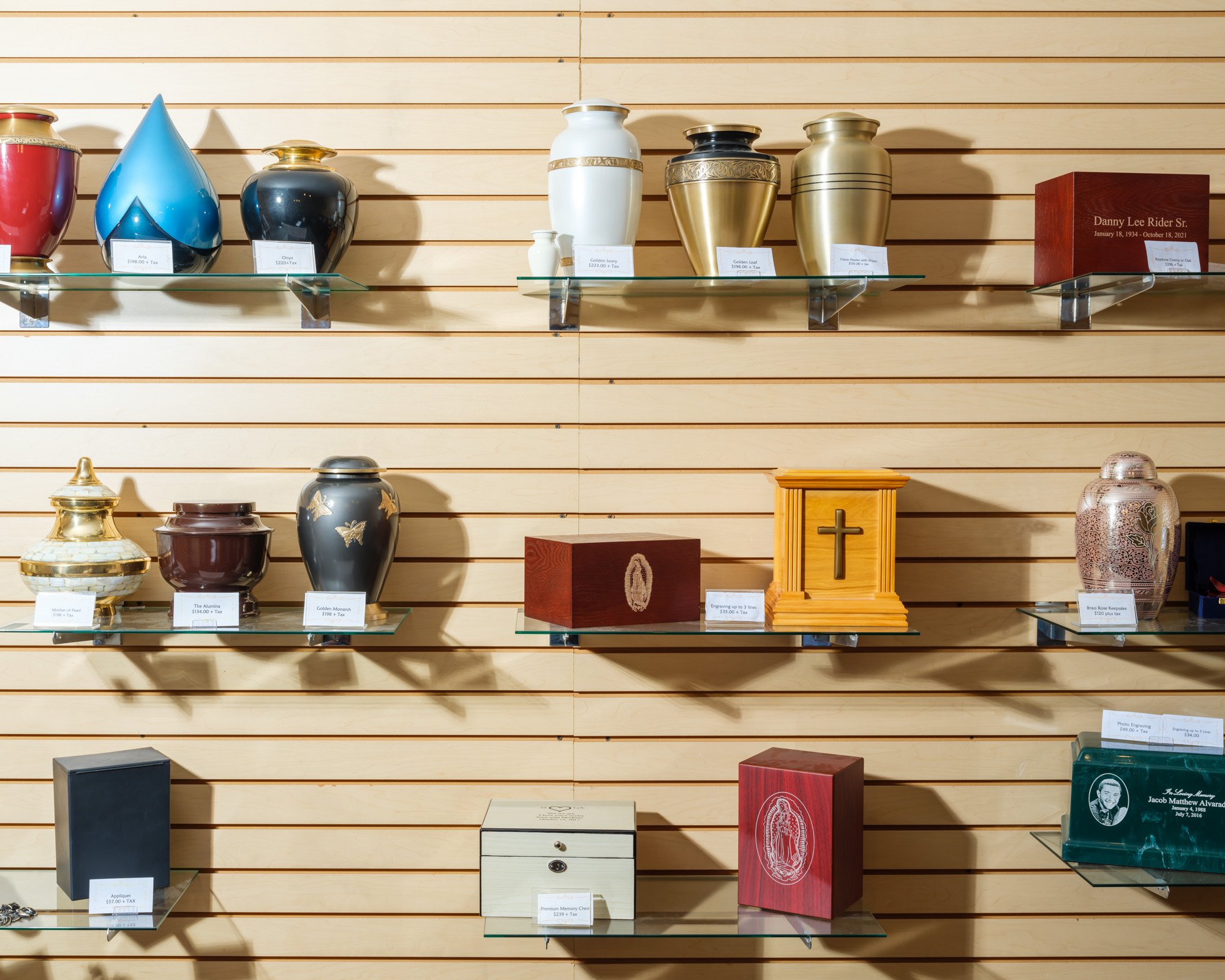
A coice of urns on display at the funeral home.
